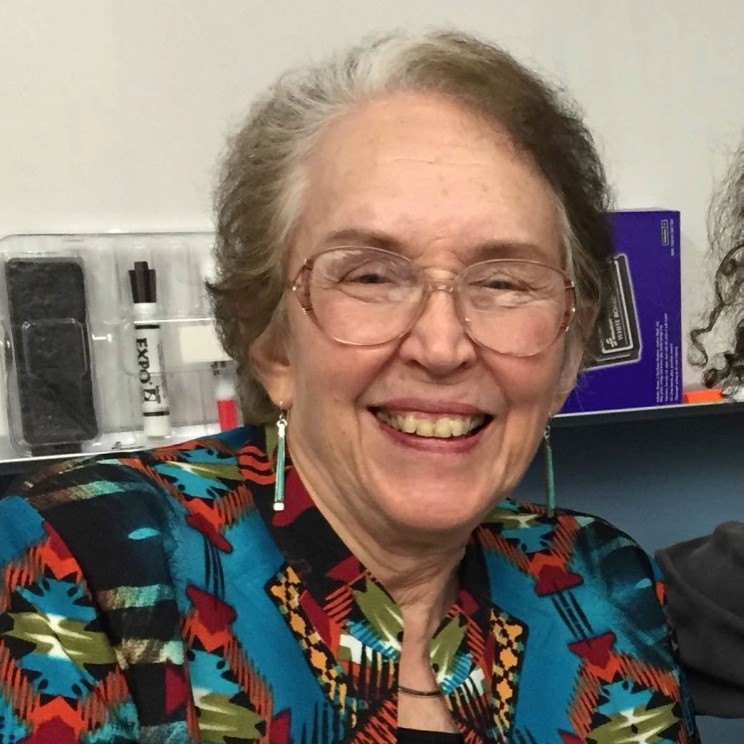 Dr. Miriam C. Poirier
Dr. Miriam C. Poirier
Retired
Tell us a bit about your scientific and educational background.
Currently I am a Scientist Emeritus at the National Cancer Institute (NCI), National Institutes of Health (NIH), where I worked since 1971. For the last 20 years of my career I was Head of the Carcinogen-DNA Interactions Section in the Center for Cancer Research. After finishing an undergraduate degree in Chemistry I was accepted by the University of Wisconsin where I received an MS in Oncology and became interested in chemical carcinogenesis, which had been recently-discovered to be driven by DNA damage.
Subsequently I was married and had three children, and in 1971 moved to Bethesda where I began working at the NCI. While still a technician, I was given the opportunity to complete (in 1977) my PhD part time at the Catholic University of America. One of the classes I took was Immunology, where I learned about radioimmunoassays, which were being used to measure ultra-low levels of human metabolites and hormones. My idea was to raise antibodies against carcinogen-DNA adducts or carcinogen-modified DNA and apply antibody-based methodologies to search for DNA adducts in humans. Over the course of the next 40 years my associates and I pioneered the evaluation of DNA adduct formation in human tissues, in studies that enabled the development of molecular cancer epidemiology.
What do you see as the greatest value or most rewarding aspect of your scientific work?
At the time I received my PhD there were no methods to measure DNA adducts in humans. Using radiolabeled carcinogens many investigators had documented the importance of DNA adduct formation in cell transformation, mutagenesis and carcinogenesis in experimental models, but the role of DNA damage in human cancer induction was essentially unknown. The DNA-adduct immunoassays, 32P-postlabelling, and mass-spectrometry were the first non-invasive methods to measure DNA adducts, and were all applied to human tissues starting in the early 1980s. Since that time it has been possible to document human DNA adduct formation occurring as a result of many types of exposures (lifestyle, ambient, occupational, medicinal and dietary) and elucidate the contribution of DNA damage to human cancer etiology (see Poirier, M.C, Env. Mol. Mut., 57:499, 2016). Throughout my career I have been the fortunate recipient of excellent mentoring, as well as the support of many impressive co-workers, students and collaborators. Without them, these accomplishments would not have been possible.
What initially drew you to the EMGS?
In the early years of the EMS there was a fairly narrow focus on mutagenesis, which was not a great fit for my lab. However, as topics broadened and I got to know more EMS members I realized that the annual meeting of a smaller society was a better place to showcase the work of my students than meetings of the much larger societies like SOT and AACR. The EMS annual meeting was always a welcoming place where my students could become known for their contributions and find collaborators. I am proud of the fact that many alumni from my lab have served EMGS in leadership positions and some have maintained long-term memberships.
How has EMGS impacted your professional development?
What comes to my mind first are the many friendships and collaborations that have allowed me, over the years, to do better science, generate more extensive data, and publish more solid papers, than would otherwise have been possible. Among the greatest honors of my life have been opportunities to serve the EMGS as Council member, SIG Leader, Committee Chair and President. I have learned a great deal from these experiences and have thoroughly enjoyed the many friends I have made in the process. I was particularly honored in 2015 to receive the Alexander Hollaender award, as Hollaender was one of my heroes.
What advice would you offer to students or early career investigators?
To aspiring young scientists who wish to pursue a career in research I would say - pick an important question to study, collaborate, and publish as much as possible. Always pay close attention to what your data is telling you because it might not be what you expect. Don’t be afraid to think outside the box. Be aware that most novel findings are not easily accepted by scientific peers. Cutting-edge studies typically have problems with peer acceptance, grant support and publication. The battles required for validation and acceptance are not for the faint of heart. The mentoring you receive and give will constitute critical components of your scientific success. If you find yourself in a lab with a dysfunctional culture, do not hesitate to look for something that is a better fit. The loss of time will be offset by enhanced productivity in a supportive environment.
 2025 EMGS Program Chair
2025 EMGS Program Chair